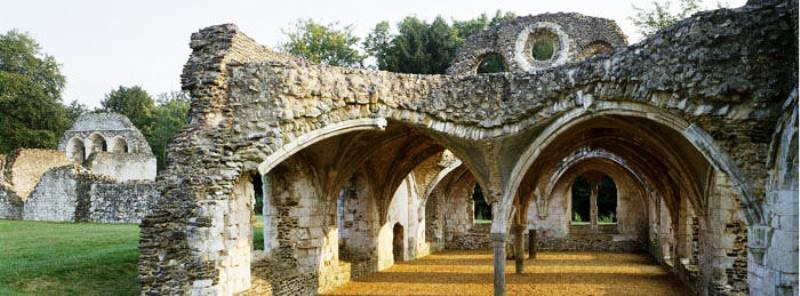A Study Day on the history of the church and its parish.
Organized by the Kent Archaeological Society, the event will open with illustrated lectures by Dr Philip Whitbourn on the town’s late 17th century origins; Rebecca Warren (‘the Anglican church from the Civil War to the Toleration Act of 1689’) and Dr Matthew Reynolds (‘Charles the Martyr: late 17th-century perceptions’).
Dr Whitbourn is the author of several works on the church and the town; Rebecca Warren is completing a doctoral study of the Cromwellian Church and its ministers at the University of Kent; Dr Reynolds is an ecclesiastical historian.
Later, at two workshop sessions, the church will be explored and there will be a rare opportunity to examine the parish’s ancient documents.
The church (pictured above) is the only one in Kent, and one of only six in the UK, dedicated to King Charles l (the last saint to be canonized by the Church of England) and was built between 1676 and 1690 at a cost of over £2,200 (equal to about £500,000 at today’s values).
An application form for tickets (including tea or coffee and lunch) at £17 per person (£15 for parishioners and KAS member) can be downloaded from www.kentarchaeology.org.uk/churches-committee.
For further details contact Mrs J Davidson, 7 Chatsworth Rd, Gillingham ME7 1DS (Jacalyn.davidson@btinternet.com).
‘The return of the bishops’
The Restoration of Charles II brought the re-establishment of Anglicanism and the return of the bishops, but rather than a return to the national church of Archbishop Laud, historians consider the settlement of 1662 marked an understanding that there was no going back to 1640.
Instead there appears to have been an acceptance, at least initially, of the need for at least some sort of compromise in an attempt to provide parochial worship that could be accepted by most people. For even though the revised Book of Common Prayer was reinstated, to the annoyance of many Puritans, at first there seems to have been a willingness to live and let live by the authorities.
Of course, for some dissenters such compromises were impossible and a significant number of parish clergy from the Cromwellian period were deprived of their livings for failing to conform. Until 1674 some of these men aided dissenters to worship collectively in secret, as only thereafter were such dissenting congregations able to meet openly. At the other end of the religious spectrum there were still Roman Catholics, but in Kent such recusants were predominantly members of the county gentry and their tenants.
Religious belief and how this should be expressed through organized worship continued to be hot topics for contemporaries, albeit the bitter disputes of the 1640s and 1650s had been largely left behind by most, or forced underground by the repressive laws against dissent of the Clarendon Code.
And it is this restored church at the level of the parish within the context of the religious settlements of the late seventeenth century that will be explored at the Study Day.



